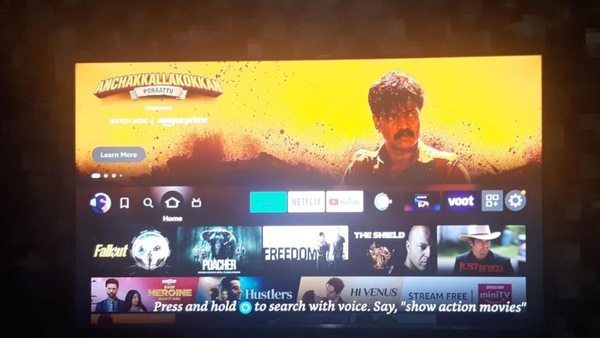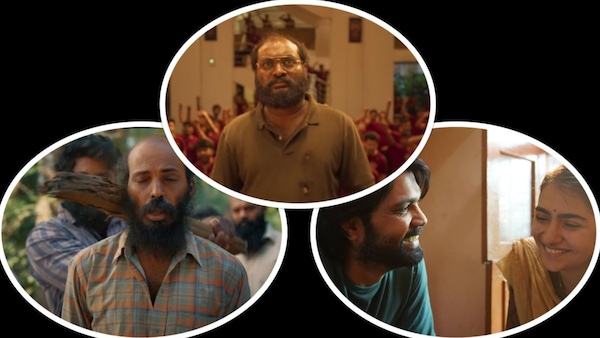Kannada filmmakers are hung up about mainstream OTTs only for the brand value, say Kannada OTT platforms
If mainstream OTT platforms are not taking Kannada content; the other side of the debate is that there are no takers for local Kannada OTT platforms also

Last Updated: 05.51 PM, Apr 25, 2024
An OTT deal is still a distant dream for a lot of Kannada films – with only a few bagging some sort of a deal with mainstream platforms. As reported in OTTplay, Amazon Prime Video is currently the most sought-after platform, but one that picks only a minute fraction of the Kannada films released year-on-year. Every time a popular actor or filmmaker publicly speaks about OTT platforms shunning Kannada content , the major discussion on social media is about the need for a dedicated pakka local platform. But here’s the thing – there are such platforms, but the content available is rather limited and, truth be told, not very confidence inspiring for a potential subscriber.
And that is exactly the reason that Kannada filmmakers cite when rejecting proposals from these platforms to host their films. In the past, every time OTTplay spoke to a film team about partnering up with any of the local platforms, the first question is, ‘What’s their subscription base?’ and our answer to that has always been, ‘Rome was not built in a day’.
Why everyone wants to be on Prime Video
Take, for instance, Namma Flix, which has been in the market for a few years, but remains a relatively unknown player to date. Speaking to us, Vijay Prakash, the CEO of Namma Flix, says that Kannada filmmakers are hung up about the brand value that comes with saying that a film is hosted on Amazon Prime Video. “There is no other value add. They are okay with revenue-sharing model on Amazon, but the same format is a strict no-no with us,” rues Vijay. This is the same sentiment echoed by Aravind Mothi of Aneka Plus OTT. “Most of the films are not even earning enough to break even. For the team, it is only a matter of pride that the film is on Prime Video. We got some eyeballs, so our job is done,” says Aravind.
On Namma Flix, Vijay has two business models. “The first involves a minimum guaranteed payout of a couple of lakhs plus revenue share or a second, which is only revenue sharing at Rs 4 per hour. In the first, if I have given him Rs 2 lakh already and the film makes a total of Rs 5 lakh, I will pay him an additional Rs 3 lakh. Our endeavour has been to ensure that there is visibility for the content, which, in turn will bump up revenue also, for which have tied up with various aggregators, including OTTplay, with more to come shortly. Compared to last year, the distribution network is a lot better now. It’s like building a water irrigation system, the canals are ready, now we need the water to flow through them,” he says.

TVOD the way ahead?
Aravind believes that TVOD (Transactional video on demand) is the best business model for a film. “At Aneka Plus, we can give them a unique dashboard to place the content, set the ticket price, the number of days for which they want to host a film on our platform and decide the number of devices it can be streamed on by one user. Technically, it’s a great proposition for them; if the team can decide the ticket price, market it and their content has the strength to get audiences, why not take a chance? Instead of getting Rs 4 or whatever for streaming on Prime Video, you may have the opportunity to charge a couple of hundred bucks per ticket. But the problem is that most of the time, film teams say that they are doing us a favour by putting their content on our platform and drawing the attention of audiences,” he explains, adding that the lure of a bigger platform like Prime Video is also the visibility it gives the cast and crew. “That seems to be the bigger motivating factor,” says Aravind.
Digital theatre to curb piracy
TVOD is the format that Rathnapuri V Bhaskar’s Cinebazzar also follows. Bhaskar refers to his platform a digital theatre and wants to push for same day same time pan world release of films for those who cannot go to theatres and end up streaming poor quality pirated prints. “Let’s say there are 10 crore movie audiences; 1 crore may watch it on Day 1, 2 crore may watch in the first week, 2 crore may not turn up based on the reviews and lack of buzz, another 2 cr may not have access to watch, while a whopping 3 cr turns to piracy. I believe that piracy is happening because movies are not available everywhere simultaneously. The digital theatre format, which brings the cinema to the comfort of your home, is not only cost effective for the user, but will also help curb piracy,” Bhaskar says. His idea, of course, has not found takers in the Kannada film industry yet.
Kannada audiences averse to TVOD?
TVOD or the rental-model, however, is not something that Kannada audiences are keen on – that’s the understanding OTTplay got speaking to several filmmakers. “I have a slightly different opinion, although we may get to the same conclusion, but Kannada audiences are quite diverse. Their interests are varied. There are demographical sections where people speak both Telugu and Kannada and others where Tamil is prominent. So, in Karnataka, I won’t say they won’t pay and watch, but they may not pay and watch Kannada content. Also, the quality of content matters; that’s one of the reasons why we have been more into original content creation and banking, to ensure good quality. This is why we can’t rapidly build this business in our region,” explains Aravind.
Unrealistic expectations from filmmakers
Meanwhile, Vijay also points out that there are intermediaries who charge an “uploading fee” of at least Rs 2 lakh and then provide the exact same channels of content distribution that he has, and yet there are filmmakers who prefer to do that than come to him. In fact, a director who chose such a route, told OTTplay on condition of anonymity that convincing a producer to support a local platform is next to impossible. Vijay chimes in, “There are producers who come to us with unrealistic expectations. Their films would have made next to nothing in terms of theatrical business, but still want us to give them Rs 30 lakh guaranteed payout. So, far, the most we’ve been able to give a producer has been Rs 10 lakh. Also, as for these intermediaries promising better revenue, why do they charge Rs 2 lakh upfront? If they can deliver Rs 30 lakh revenue, they can deduct their service charges from that, right?”
While Rs 10 lakh may seem like peanuts, Vijay says that he can change this and offer more only when his content library grows not only in quantity, but quality as well. “There has to be a steady stream of content, some of which should be star- led. I’ve had producers agree to our terms and then come back a few days later stating that they are looking at other avenues,” says Viay. Aravind adds, “When we approach filmmakers, the ask is always exorbitant. They are okay to place their content on Prime Video for nothing, but won’t try the TVOD option with us.”
